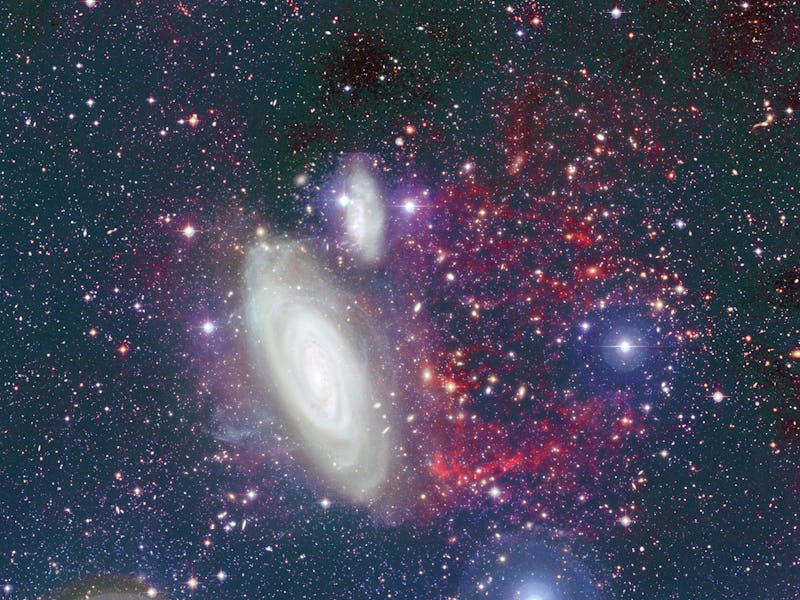Check Out This Jaw-Dropping Gas Plume Trailing a Nearby Galaxy
And it stretches for more than 300,000 light years.

About 55 million light years away from the Milky Way, there’s another galaxy — NGC 4569 — with a tail. It’s weird but not uncommon when it comes to celestial objects. Plenty of galaxies have horns, tails, and other mutated extremities made of gas and dust. Thing is, this tail is special. It’s more than 300,000 light years in length — five times bigger than NGC 4569 itself.
An international team of researchers detail their new findings of NGC 4569’s long trail of hydrogen gas in a new paper published in the journal Astronomy & Astrophysics. They explain that while observing NGC 4569, they noticed the galaxy did not contain as much gas as it ought to have. All of that excess matter must have gone somewhere, but it was unclear where it ended up.
Follow-up observations made with ultra-sensitive instruments on the Canada-France-Hawaii Telescope on Mauna Kea, Hawaii, detected a huge stream of gas just jutting off from the rest of the galaxy’s edge. Turns out that plume of gas contains the same amount of gas that’s missing from NGC 4569.
The Virgo Cluster.
How is a 300,000 light year-long trail of gas made possible? Well, NGC 4569 itself is located in what astronomers call the Virgo cluster — a group of galaxies sitting quite close to one another. The galaxy is moving through the cluster at a astounding 745 mph — causing a lot of matter to be stripped away.
“We know that big clusters of galaxies trap a lot of hot gas,” study co-author Luca Cortese, from the International Center for Radio Astronomy Research, said in a press release. “So when a galaxy enters the cluster it feels the pressure of all the gas, like when you feel the wind on your face, and that pressure is able to strip matter away from the galaxy.”
The image is stunning:
The foreground galaxy is NGC 4569 of the Virgo cluster.
The red filaments at the right of the galaxy show the hydrogen gas that has been removed. The tail represents about 95 percent of the gas reservoir the galaxy needs to feed the formation of new stars.